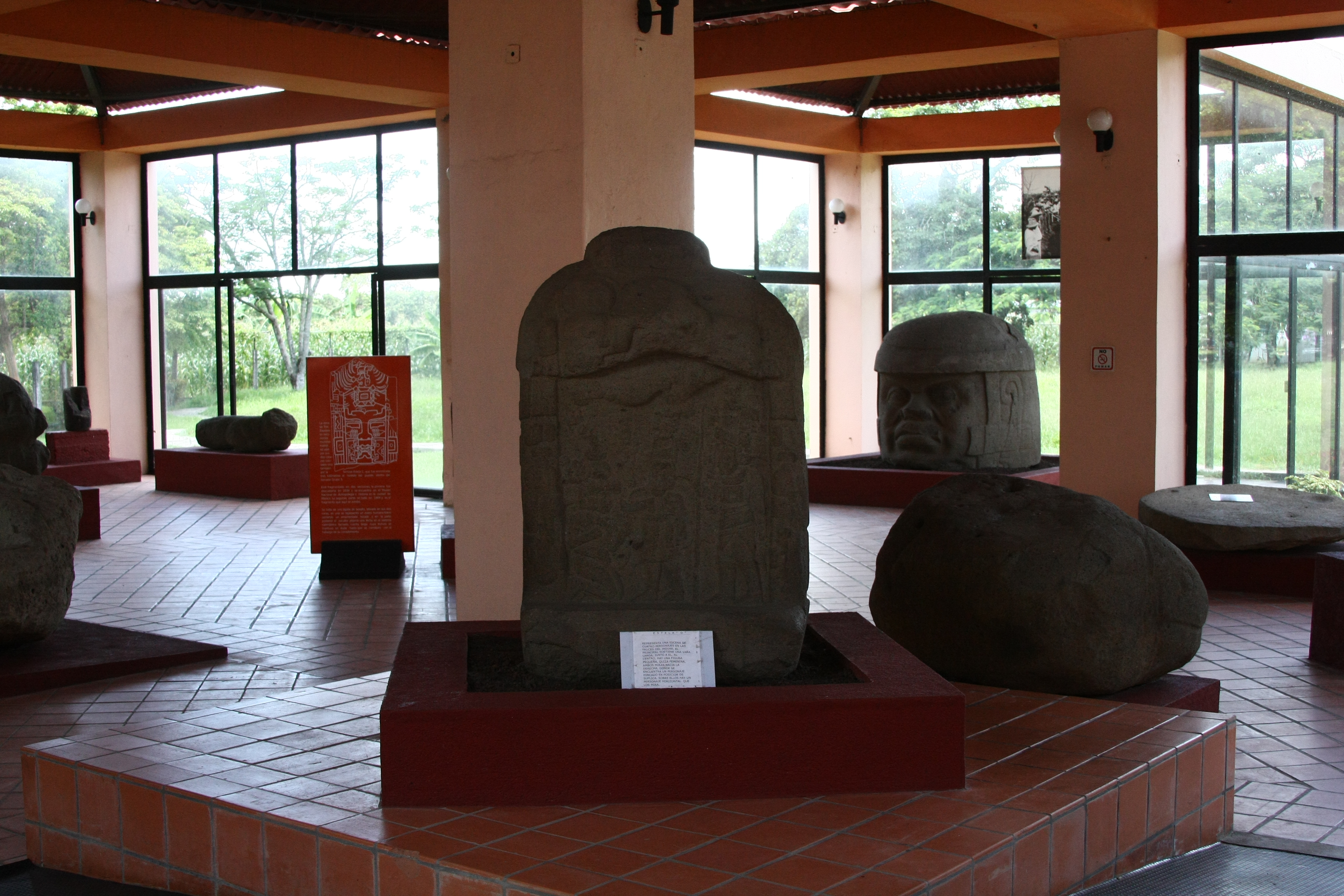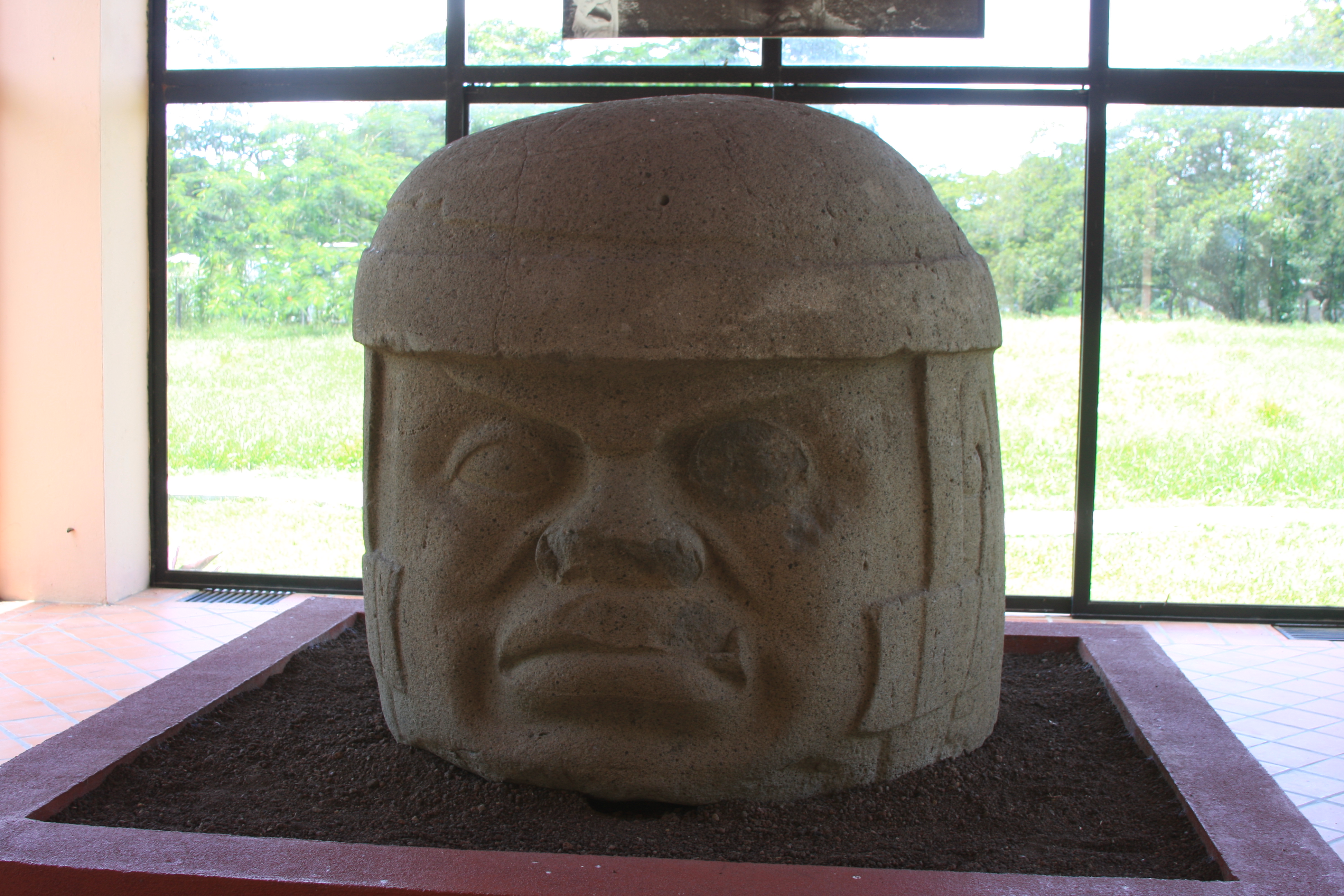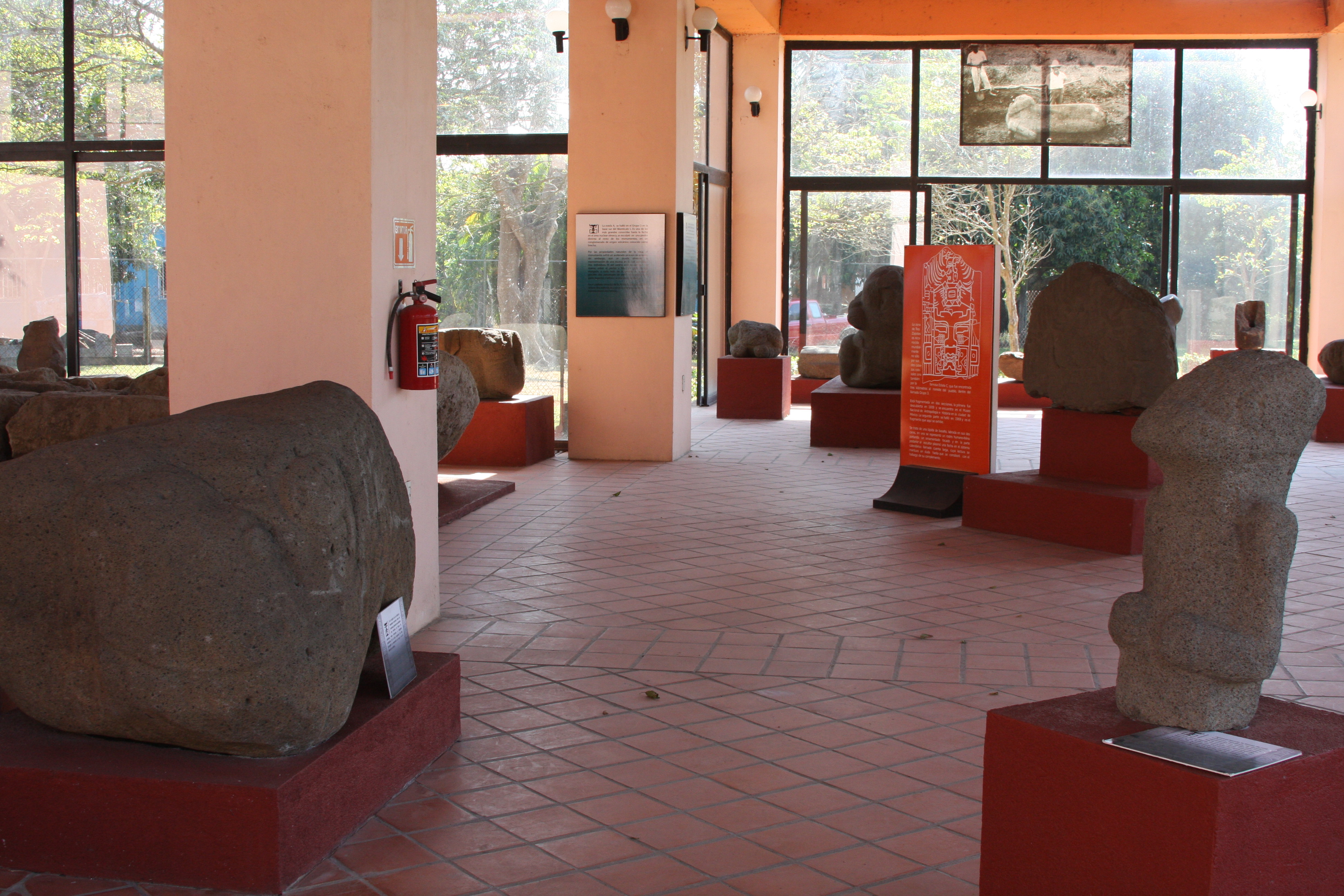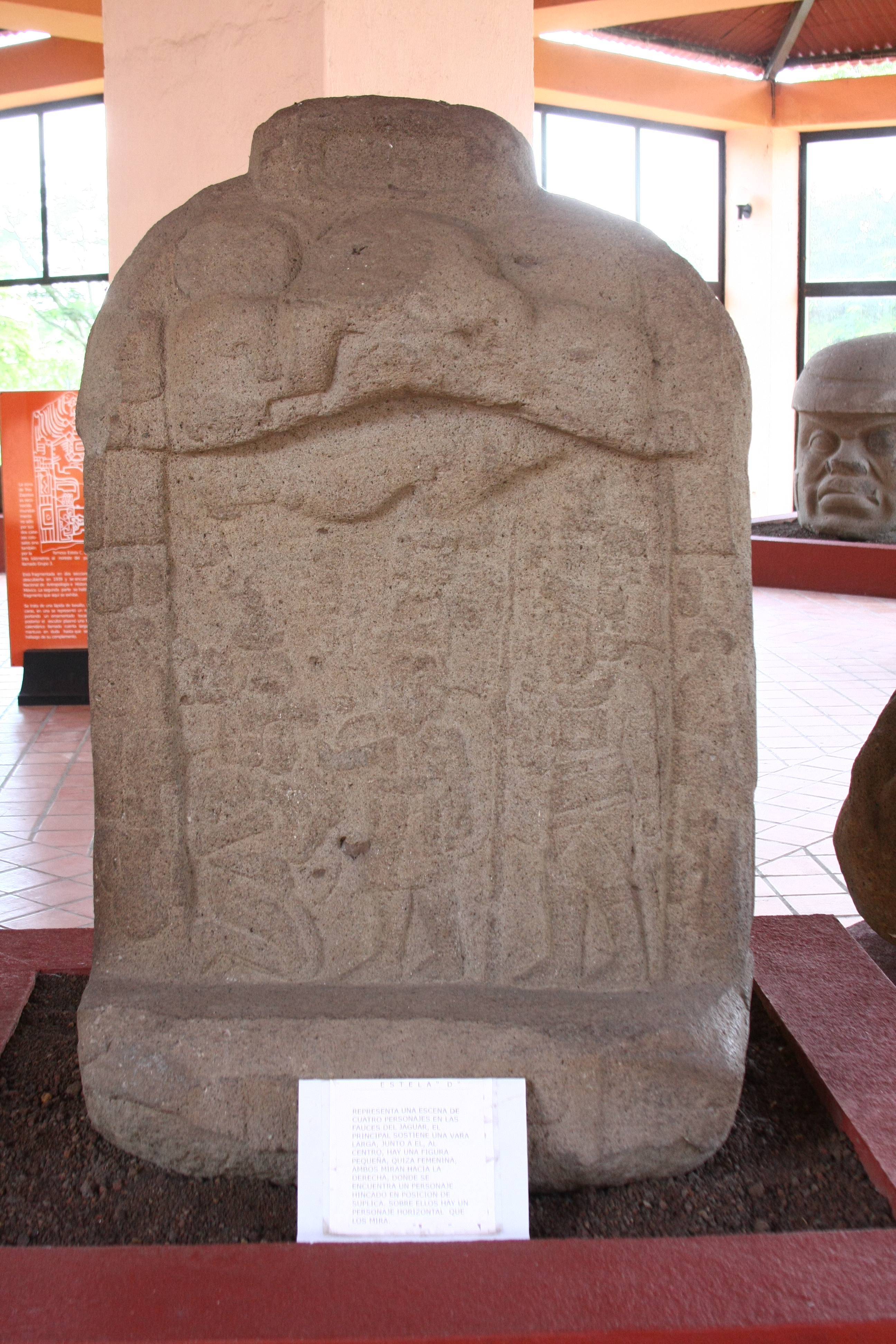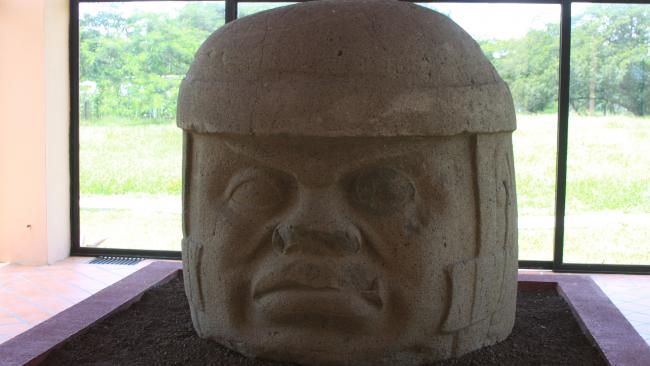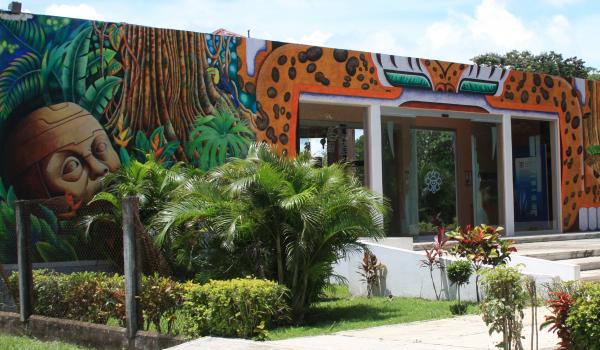The Olmec culture has been considered the forebear of pre-Hispanic societies structured as developed urban settlements. This culture principally spread around the Gulf of Mexico, although its precise south and southeastern limits are unknown. It reached its apogee between 1300 and 600 BC. The pre-Hispanic settlement of Tres Zapotes spread more than two miles along the Hueyapan stream, and is known principally for the considerable quantity of Olmec and Izapa-style structures found on the site.
The majority of the buildings are on the floodplain, on the west side of the stream, where a natural terrace is formed from sedimentary and volcanic deposits. The survey identified more than 150 mounds, artificial terraces and modified natural features. The site is formed of three major groups of mounds, situated around irregular plazas covering an area of three quarters of a square mile, and various groups of low mounds which have still not been identified and which would appear to be residential platforms, including the Ranchito Groups and Quemados Mounds.


